The Samsung 850 EVO 4TB SSD Review
by Billy Tallis on July 11, 2016 10:00 AM ESTAnandTech Storage Bench - The Destroyer
The Destroyer is an extremely long test replicating the access patterns of very IO-intensive desktop usage. A detailed breakdown can be found in this article. Like real-world usage and unlike our Iometer tests, the drives do get the occasional break that allows for some background garbage collection and flushing caches, but those idle times are limited to 25ms so that it doesn't take all week to run the test.
We quantify performance on this test by reporting the drive's average data throughput, a few data points about its latency, and the total energy used by the drive over the course of the test.
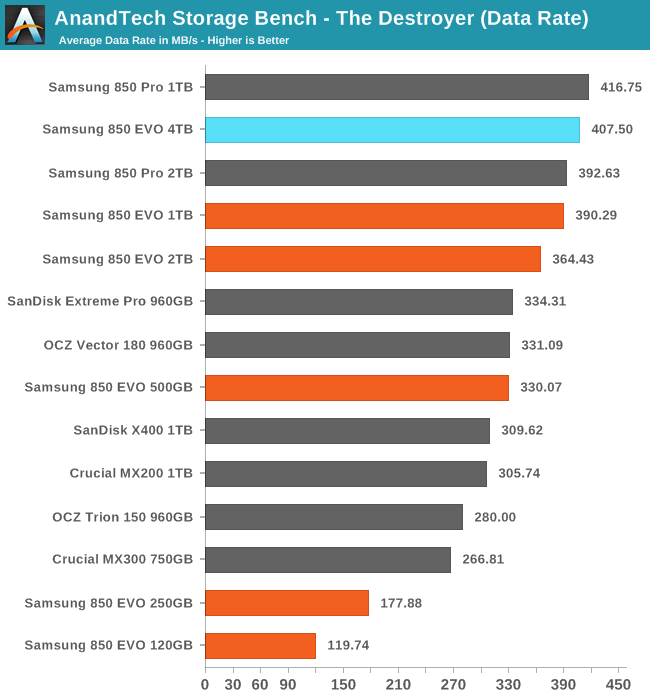
The Destroyer isn't enough to really challenge the 4TB 850 EVO, as this test doesn't write enough data to fill the drive even halfway. The 1TB 850 Pro still holds the record for the highest average data rate maintained by a SATA drive, but the 4TB EVO is closer to that than to any slower drive.
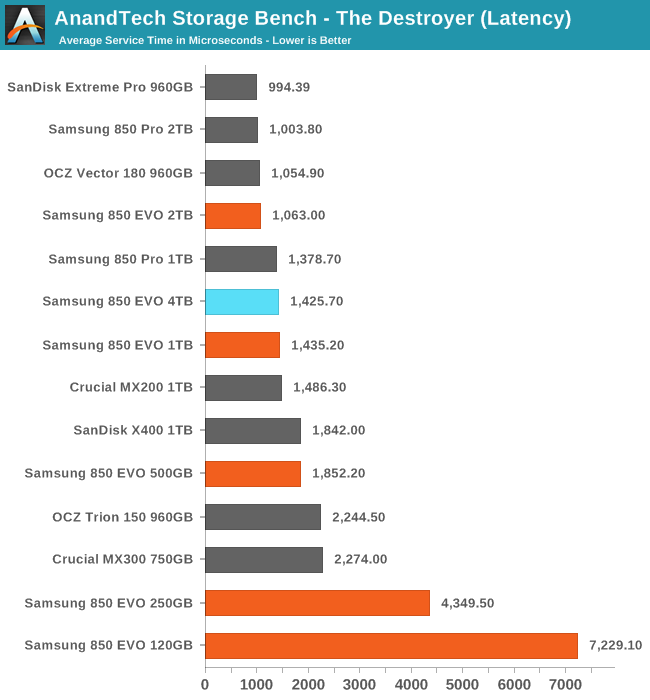
After the 2TB 850 Pro and EVO managed to tie with the top tier of drives for average service time, it is a little disappointing to see the 4TB 850 EVO only manages to match the 1TB models, but that's still high-end performance.
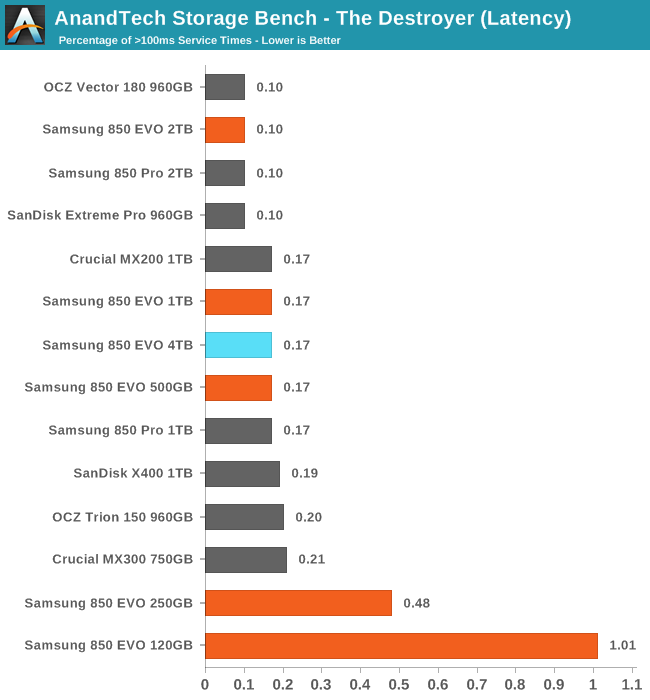
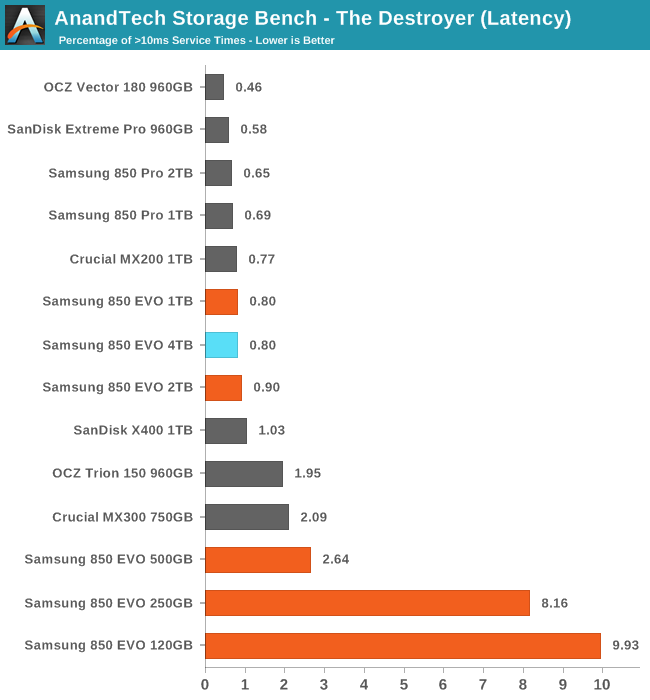
The 4TB 850 EVO has slightly more extreme latency outliers than the 2TB 850s, but at the more strict threshold of 10ms it is tied with the 1TB 850 EVO for being the best TLC drive.
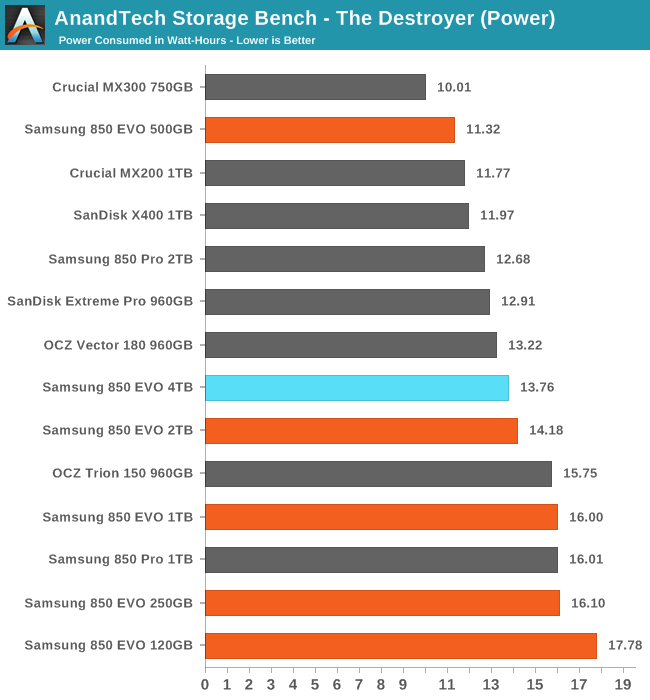
The 4TB 850 EVO brings a little more reduction in power use over the 2TB 850 EVO, which substantially cut power use relative to the 1TB model. The 4TB drive is clearly not paying any significant penalty for keeping so much flash and DRAM powered up.










145 Comments
View All Comments
ACE76 - Monday, July 11, 2016 - link
http://www.fudzilla.com/news/memory/39668-mushkin-...Wait for this....any company that releases something first, price gouges.
JellyRoll - Monday, July 11, 2016 - link
The "21nm" is the BL half pitch. The EE Times article does not say that they shrunk from 40 to 21 for the overall measurement.Billy Tallis - Monday, July 11, 2016 - link
Yep, I misinterpreted that. They haven't changed the lithography, but they've shrunk some parts of the die through other means.amayii - Monday, July 11, 2016 - link
Why wasn't the Samsung 950pro taken into account in the benchmark?Is is because it is a NVMe SSD?Solidstate89 - Monday, July 11, 2016 - link
Of course that's the reason. We all know a PCI-e/M.2 SSD (whether it uses NVMe or not) will blow the pants off any SATA SSD when it comes to performance numbers.There is no reason to compare them.
amayii - Monday, July 11, 2016 - link
Ok, thanks!Samus - Monday, July 11, 2016 - link
This drive cost more than my whole PC :/Notmyusualid - Tuesday, July 12, 2016 - link
Ha ha, thanks for putting it into perspective!Made me smile.
doggface - Monday, July 11, 2016 - link
I would hope that when a manufacturer moves to a new process there would be a corresponding drop in $/GB. To be moving to 48layer and still charging ~30c is worrying. Needs to be a third of that to be anything other than a wet dream for consumer.The theorised ssd takeover of HDDs doesnt seem to be materialising yet.
Kristian Vättö - Monday, July 11, 2016 - link
A new process doesn't mean immediate cost savings. It takes time for yields to mature and even then 48L has more process steps than 32L. Ultimately it's a game of economics. Why would you sell something for 10c when the competition is charging 30c? For companies it's always all about the profit.